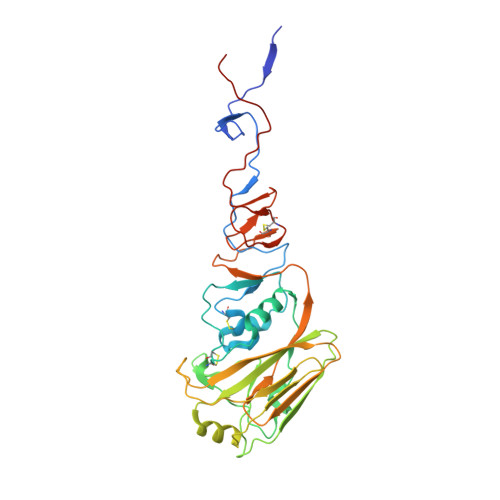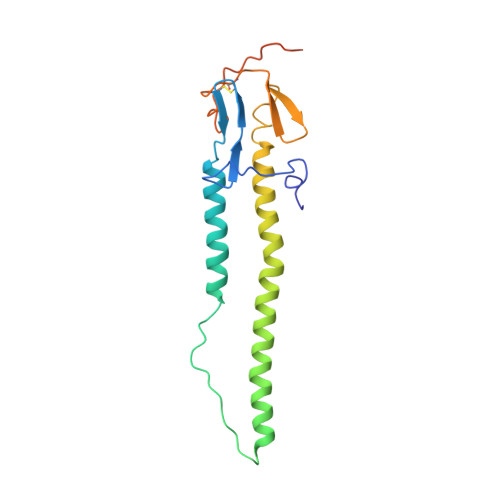Divalent cation-induced conformational changes of influenza virus hemagglutinin.
Seok, J.H., Kim, H., Lee, D.B., An, J.S., Kim, E.J., Lee, J.H., Chung, M.S., Kim, K.H.(2020) Sci Rep 10: 15457-15457
- PubMed: 32963316
- DOI: https://doi.org/10.1038/s41598-020-72368-x
- Primary Citation of Related Structures:
6LKS - PubMed Abstract:
Divalent cations Cu 2+ and Zn 2+ can prevent the viral growth in mammalian cells during influenza infection, and viral titers decrease significantly on a copper surface. The underlying mechanisms include DNA damage by radicals, modulation of viral protease, M1 or neuraminidase, and morphological changes in viral particles. However, the molecular mechanisms underlying divalent cation-mediated antiviral activities are unclear. An unexpected observation of this study was that a Zn 2+ ion is bound by Glu68 and His137 residues at the head regions of two neighboring trimers in the crystal structure of hemagglutinin (HA) derived from A/Thailand/CU44/2006. The binding of Zn 2+ at high concentrations induced multimerization of HA and decreased its acid stability. The acid-induced conformational change of HA occurred even at neutral pH in the presence of Zn 2+ . The fusion of viral and host endosomal membranes requires substantial conformational changes in HA upon exposure to acidic pH. Therefore, our results suggest that binding of Zn 2+ may facilitate the conformational changes of HA, analogous to that induced by acidic pH.
Organizational Affiliation:
Department of Biotechnology and Bioinformatics, Korea University, Sejong, 30019, Korea.





















